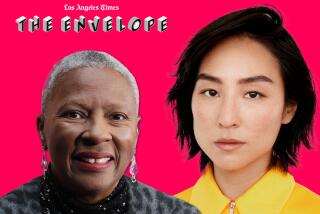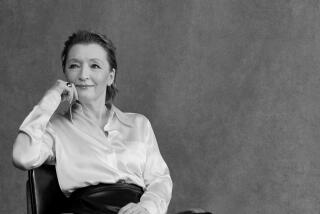Phooey on Froufrou
- Share via
THE MOVIE: “Howards End”
THE SETUP: Margaret Schlegel (Emma Thompson, pictured left, with Vanessa Redgrave at right), intelligent and well-off, marries a rich widower, Henry Wilcox (Anthony Hopkins), but both of their families object. Howards End, the name of the bucolic Wilcox family country house, provides a symbolic centerpiece for the story, which is based on E. M. Forster’s novel set in class-conscious Edwardian England.
THE LOOK: The period in which the story is set--1908 to 1913--was a transitional one in women’s fashion, points out Jenny Beavan, who designed the costumes with John Bright. (The Oscar-winning team also collaborated on “A Room With a View.”) Victorian frills were fading, fashions were becoming slimmer and simpler. Indeed, by movie’s end, the designers raise hemlines to a new high: the ankle.
The free-spirited Schlegel and her sister, Helen (Helena Bonham Carter), wear some men’s clothing, such as fitted cotton shirts--sometimes with neckties.
If you like the look, consider that Ralph Lauren’s fall collection pairs the very same shirts and ties.
Margaret, a practical and emancipated Edwardian woman, also sports sensible cardigans, paisley shawls, pleated skirts, fitted suits in wool, cotton and linen, but--sorry, Ralph--no trousers. Helen, even more offbeat than her sister, wears pinafore dresses and lets her masses of hair fall all but free.
The Wilcox women, by contrast, are laden with ostrich-feather hats of excessive breadth, pearl necklaces and dresses and suits of more precious silks.
Unisex fashion rears its head when the family automobile roars on screen. The car was a great equalizer--men and women alike donned linen dusters to ward off dirt from unpaved roads. Henry adds a linen cap and goggles, a wild and amusing leap from his stiff, city-gentleman pin-striped suits.
Also noteworthy are the colors. Upper-class men always wore black, except perhaps for a gray tweed country suit. But for upper-class women, pale colors were a sign of wealth. Poor women preferred black because it didn’t show dirt.
THE SOURCES: All the clothes were made at London’s Cosprop costume house. Some were rebuilt from antique garments, some were created from pieces of vintage cloth and some were newly made from old patterns. Most of the hats were newly made by Cosprop.
THE PAYOFF: For a costume epic, the women’s clothes are surprisingly restrained, and it’s precisely their understated design that makes them un-costumelike. While no single dress or suit stands out, the total effect is worth appreciating.
More to Read
Only good movies
Get the Indie Focus newsletter, Mark Olsen's weekly guide to the world of cinema.
You may occasionally receive promotional content from the Los Angeles Times.










